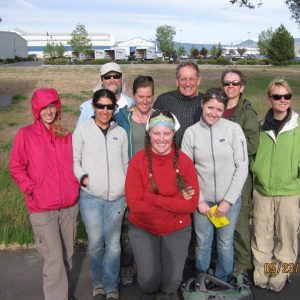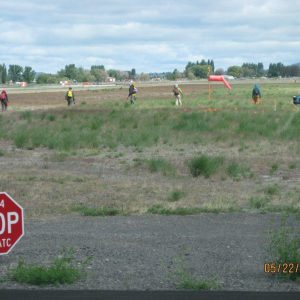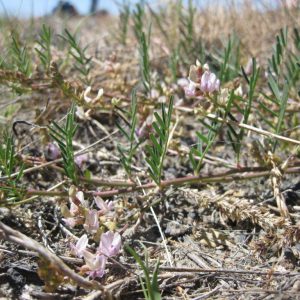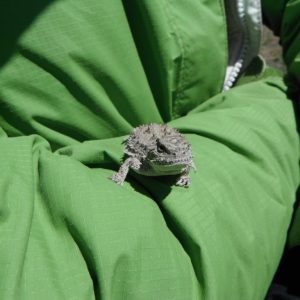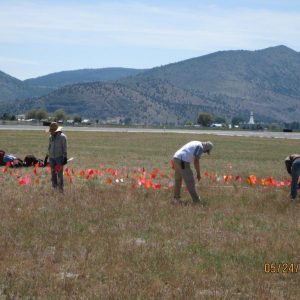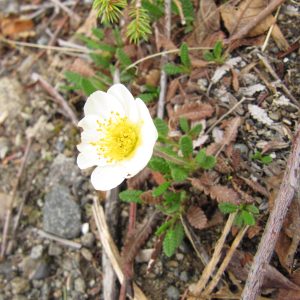The past few weeks have been filled with lots of new adventures, surveys, and sights. One week was spent surveying for Applegate’s milkvetch, an endangered plant species endemic to the Klamath Basin. It just so happens that the largest population of Applegate’s milkvetch is located at the local Klamath Falls airport. Therefore, to survey for this species we had to have a 3 hour information and safety discussion on the airport and airplanes. We then had to be escorted to patches of grass in between the taxi ways and runways by airport crew members to survey for this plant species while planes and U.S. airforce jets were frequently taking off. Needless to say, it was a pretty crazy environment with planes and jets taking off here and there, in such close proximity to us. It was also pretty amusing to try to coordinate and communicate with a crew of about 7 people while all wearing earplugs to protect our ears from the loud jets. Thus far, it was definitely the most bizarre environment I have worked in doing plant or wildlife surveys. To add to the craziness, it was also a very bad weather week with some rain, snow, sleet, hail & strong winds- which does not help at all when you are basically in the most exposed area you can be. Surveying for Applegate’s milkvetch at the airport may not have been my favorite field time this season, but looking back on it now only a couple of weeks after, I am glad to have had the experience and some very comical memories to accompany it.
The past couple of weeks I have been surveying for lost river, modoc, and shortnose suckers, as well as monitoring bald eagle nests around the Basin. We first set up four fyke nets for a week to try and catch some juvenile suckers in a pond, where they had been imported, but we failed to catch any live suckers. The biologist lead of the suckers thinks that it had been a cold winter and that the pond had suffered a hard freeze, consequently wiping out the small sucker population in the small pond area.
Yesterday, one of my coworkers and I traveled to a forest stream in northern California to electroshock to try and find Modoc suckers. Unfortunately, we did not discover any suckers in the stream portion that we electroshocked but we did catch many brown trout, speckled dace, and pit river sculpin. Brown trout are very invasive to this area and are impeding conservation efforts of native fish, so unfortunately we had to practice eradication on the brown trout that we caught. On the bright side though, we will be making some delicious fish tacos now!
Other than fish and plants, my time has been spent checking up on eagle nests that were established earlier this season to monitor them and see how many young (if any) they have. It has been exciting for me to see nestling eagles for the first time! The ones that I have seen this week have been very big baby birds with dark feathers, bright orange beaks and large curious eyes. They seem to be beginning to get a little bit antsy in their nests and in the next few weeks should begin to really stretch out their wings and fledge!
Here are some photos from the milkvetch airport surveying.

